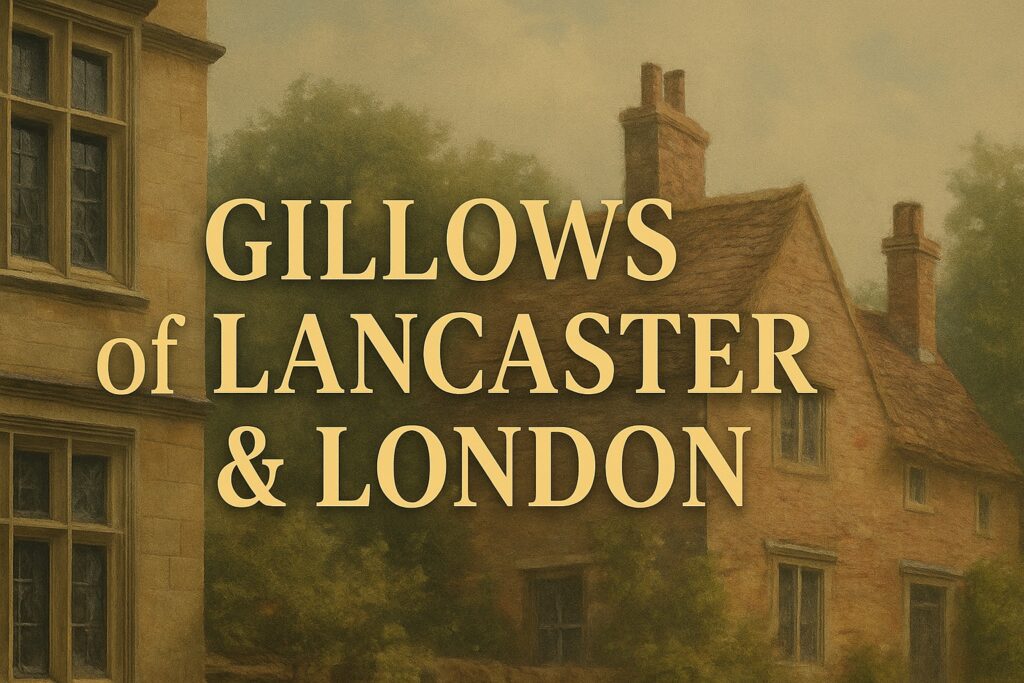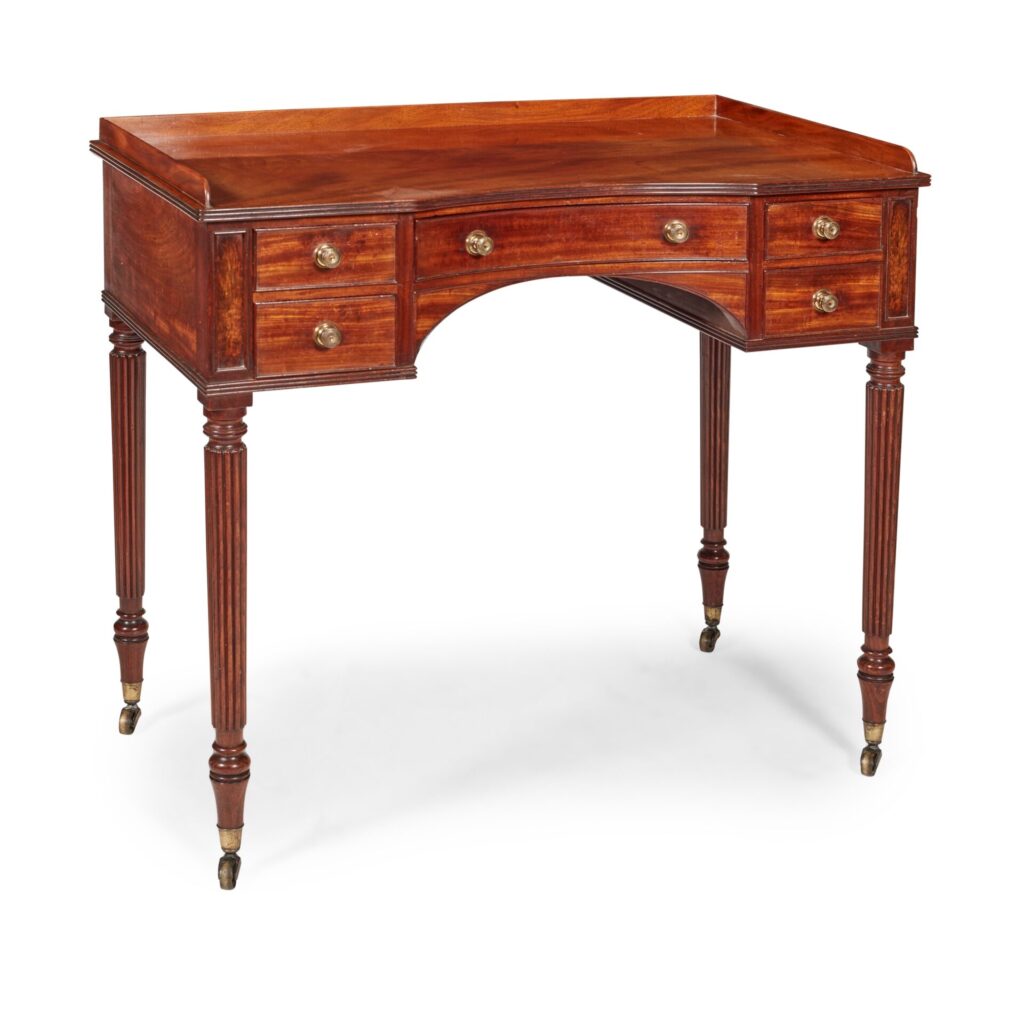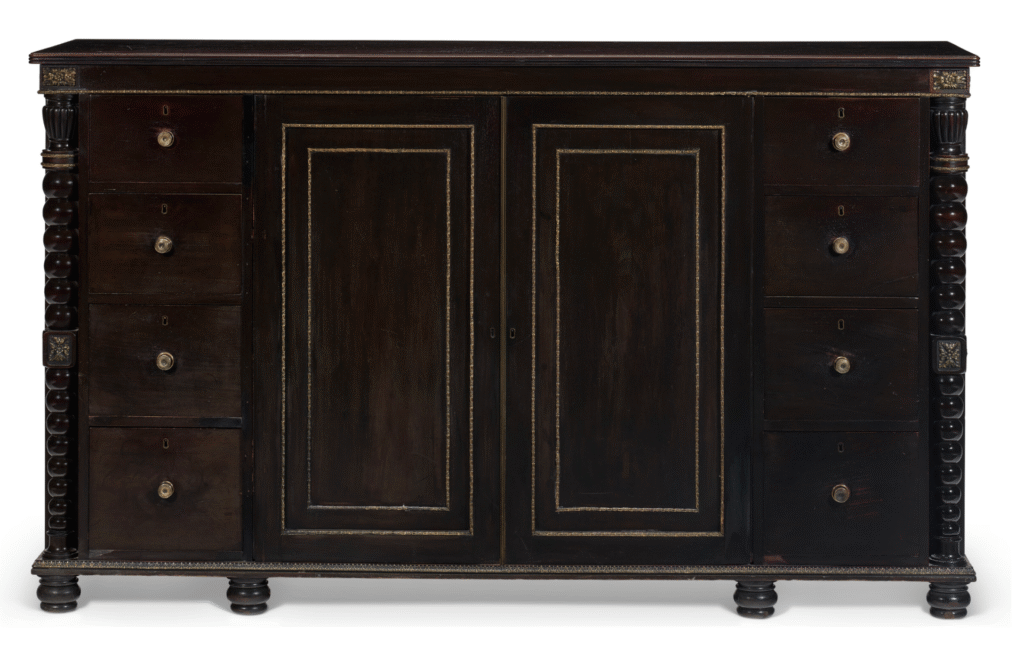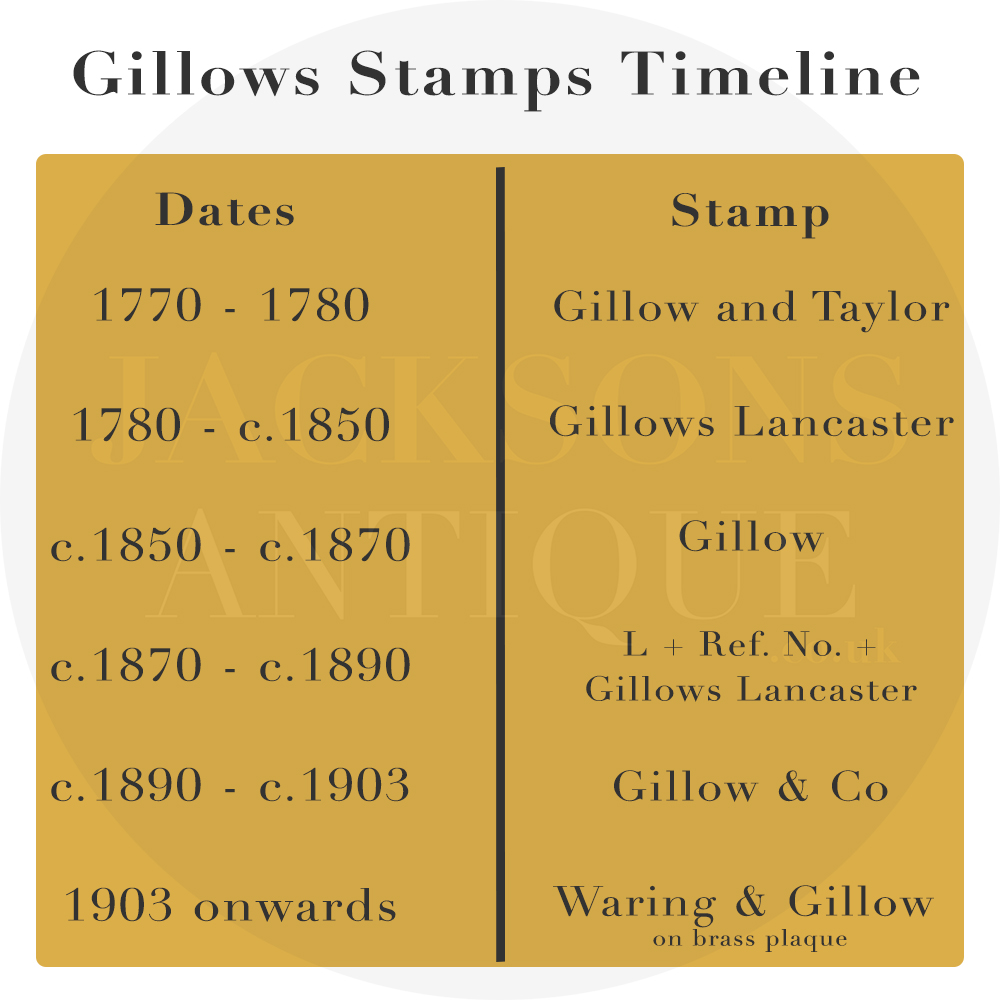
Gillows of Lancaster & London
June 4th 2021
The Legacy of England’s Finest Cabinet Makers
Gillows of Lancaster & London was one of the most important English furniture manufacturers of the 18th and 19th centuries. Founded around 1730 by Robert Gillow (1704–1772), the company built a reputation for exceptional craftsmanship, innovative designs, and the use of high-quality imported mahogany.
Origins and Early Success
Robert Gillow, born in Singleton, Lancashire, began his career as an apprentice cabinetmaker before working as a ship’s carpenter in the West Indies. On his return to England, he brought with him samples of mahogany and is often credited as one of the first to import the wood into Britain. By 1731, he had established his own workshop in Lancaster, later expanding to London.
Gillows quickly gained a reputation for quality and innovation. The firm is credited with inventing the telescopic dining table, the revolving library table, and the Davenport desk, designed for Captain Josiah Davenport. Their clientele included wealthy families, aristocracy, and institutions both in Britain and overseas.

REGENCY MAHOGANY WASHSTAND BY GILLOWS stamped on the drawer GILLOWS LANCASTER Sold by LYON AND TURNBULL FIVE CENTURIES SALE DAY ONE: 10 FEBRUARY 2021 LOT 242
Expansion and Partnerships
In 1757, Robert entered into partnership with his son Richard Gillow (1733–1811), and the firm became Robert Gillow & Son. Richard, also a trained architect, financed the construction of Lancaster’s Catholic Church in Dalton Square in 1798. His brother, Robert Gillow II (1747–1795), later joined, and together they expanded the company, opening a showroom on Oxford Street, London, in 1769. By 1789, Gillows employed around 50 skilled craftsmen.
The firm became synonymous with luxury furniture, supplying not only private homes but also public buildings across Britain and abroad. They collaborated with leading designers such as Chippendale, Sheraton, and Hepplewhite, adapting fashionable styles while maintaining their own unique standards.
Later History and Waring & Gillow
In 1814, Gillows passed into the hands of Redmayne, Whiteside, and Ferguson, though the family name remained. Under their direction, the firm grew into one of the largest interior design companies outside London, furnishing aristocratic houses such as Tatton Hall and undertaking international commissions in Australia, India, and South Africa.
By the late Victorian era, the rise of mass production created financial strain. In 1903, Gillows merged with Warings of Liverpool to form Waring & Gillow, producing furniture, ship interiors, and later Art Deco designs. The company survived into the 20th century but eventually declined, merging with Maple & Co. in 1980.

Gillows of Lancaster and London George IV Ebonised Mahogany Sideboard Sold by CHRISTIE’S AMERICAN MANOR HOUSE: A BEVERLY HILLS ESTATE BY MICHAEL S. SMITH LOT 170 27 MAR 2024
Identifying Gillows Furniture
One challenge for collectors is that much Gillows furniture was unstamped. However, many pieces do bear distinctive marks, found on drawer edges, table tops, chair legs, or even pencilled under linings.

The earliest labels (Gillow and Taylor) are extremely rare, as they were paper and easily lost. Later brass plaques from Waring & Gillow are easier to find but generally indicate later production.
Legacy
Today, Gillows furniture is highly prized for its exceptional craftsmanship, rare timbers, and innovative designs. Examples can be found in major museums such as the Victoria and Albert Museum in London and the Judges’ Lodgings Museum in Lancaster. Their archives, one of the most comprehensive of any cabinetmaker, remain an invaluable resource for historians and collectors.

Owner at Jacksons Antique
I am a specialist dealer in fine antiques, curating beautiful objects for the luxury market through my bespoke online shop, Jacksons Antique, with a strong focus on Japanese antiques and European works of art. As part of a new generation of online antique dealers, I bring over 10 years of experience in the industry, working exclusively online and at select exhibitions. Trust and transparency are at the heart of my business, ensuring clients can buy with complete confidence. I consider myself fortunate to handle some of the most exquisite objects ever created and to share them with a global audience while proudly helping to bring a younger perspective to the world of antiques.
DECORATIVE | JAPANESE | FINEST OBJECTS
